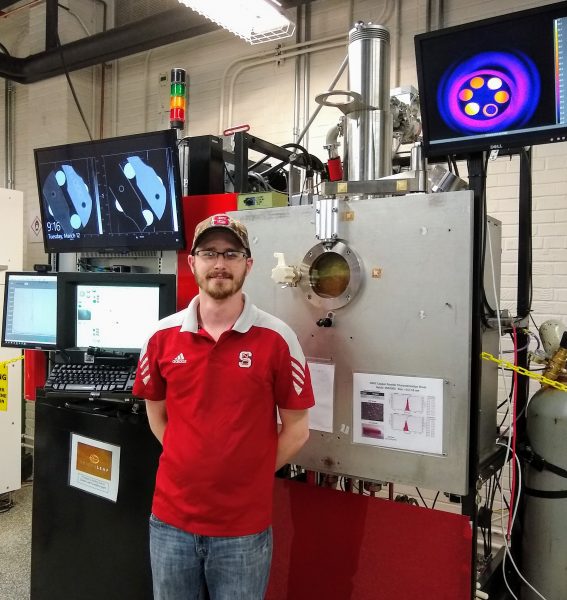Meet Chris Ledford
 Tell me a little about yourself!
Tell me a little about yourself!
I am currently in my fourth year of my PhD in Industrial and Systems Engineering under Professor Tim Horn at the Center for Additive Manufacturing and Logistics (CAMAL). I have my BS and MS in Materials Science and Engineering from NC State as well. I am an avid TV watcher and technology enthusiast. I love to tinker and see how things tick. I enjoy the outdoors and off-roading. I would love to work on material development for metal additive manufacturing and one day begin my own additive manufacturing development company.
What primary instrument(s) are you using for your research and what do you like about it?
I am currently using the FIB, Nano-CT, Keyence, High Temperature XRD, and the Talos TEM.
The FIB and Talos TEM allow us to study the internal features of the fine metal powder through serial sectioning, elemental mapping, and oxide determination. The high temperature XRD allows us to watch transformations of our powder as we would see during part fabrication. The Nano-CT and Keyence allow us to characterize the internal defects and surface morphologies of our fabricated parts.
What have you been researching?
At the Center for Additive Manufacturing and Logistics (CAMAL), we utilize fine metal powders of all compositions to fabricate geometrically complex solids using electron beam melting and selective laser melting. I am particularly focused on electron beam melting of pure oxygen free electrical copper for use in radio frequency devices and accelerator applications. One particular issue is the oxygen content of the as-received copper powder and ways to minimize this oxidation so that we can fabricate pure copper components.
How is your research impacting the community?
My research is based on a need for minimizing the number of individual components and braze joints in these radio frequency devices which will result in significant time and cost savings. This will also allow for more complex and highly optimized designs not previously manufacturable using traditional processes.
What have you learned from your experience at AIF?
I have learned that there always seems to be a tool that can be utilized for a particular issue that we have arise. So many techniques exist for characterization of materials that you can always find the right tool for the job.
Best thing about AIF in 5 words or less?
Is there a staff member at AIF that has helped you?
I have known Toby and Roberto for more than 10 years now and they are always there if I need a helping hand.

- Categories: